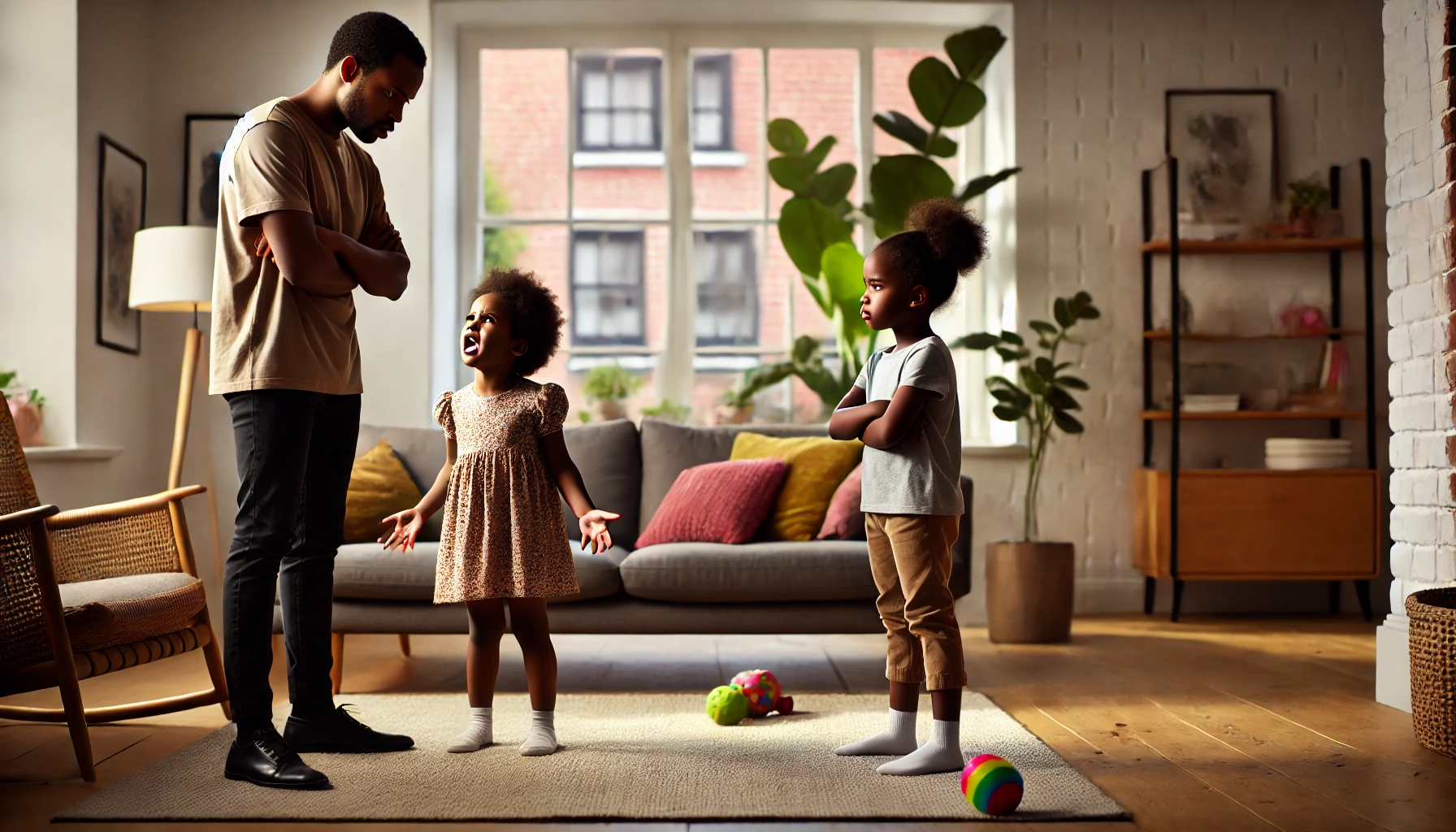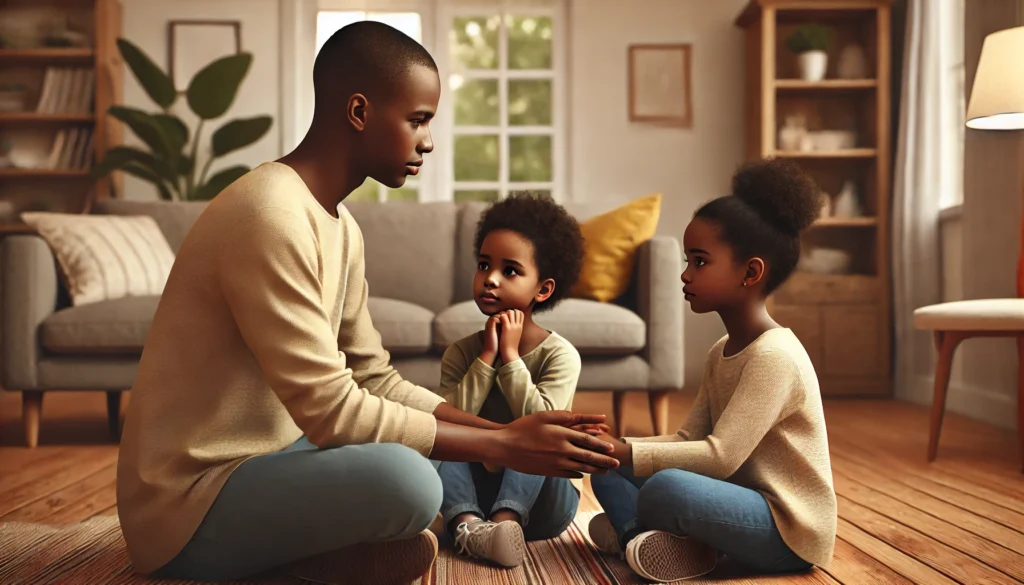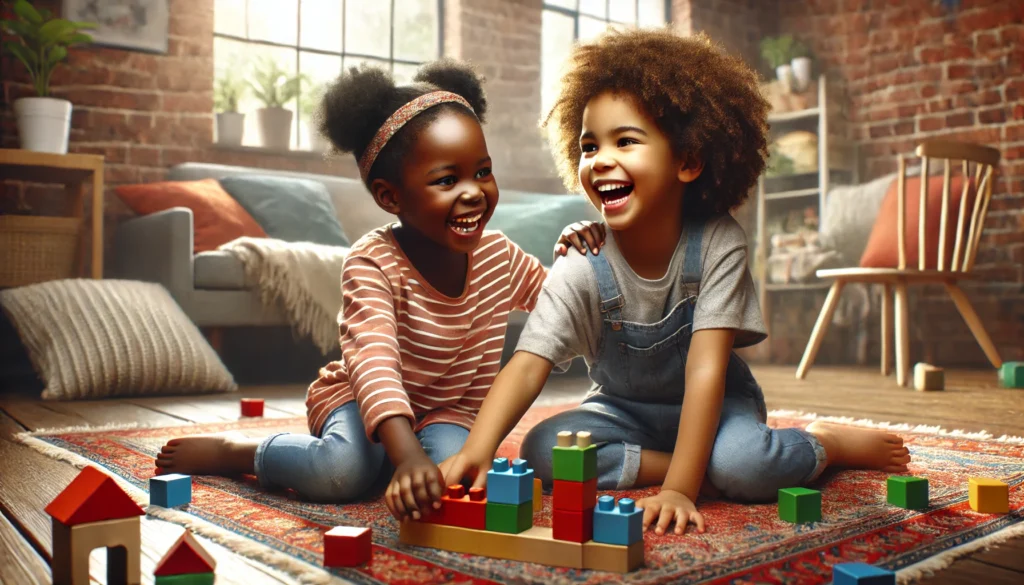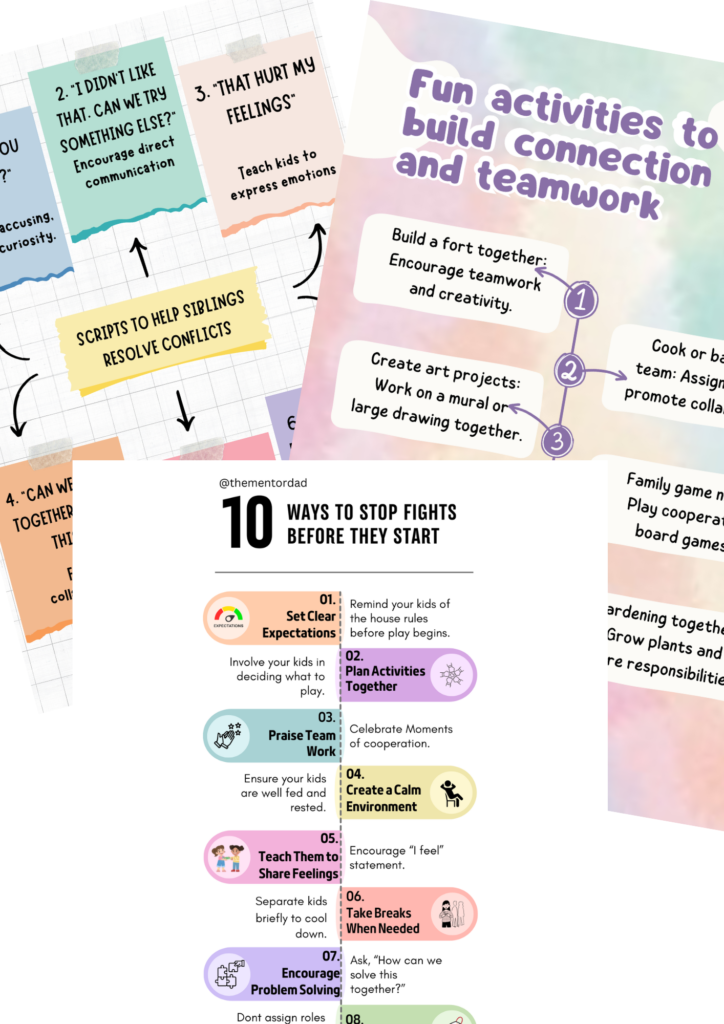Now, let’s be honest for a second.
Have you ever felt more like a referee than a parent? Breaking up sibling fights all day, every day?
Fists flying. Toys are being thrown. You can’t even go to the bathroom without hearing screaming, which sounds like the start of World War III.
Sound familiar?
You’re not alone.
In a parenting group I’m part of, a dad opened up about his two daughters, ages five and seven, constantly fighting. He said their personalities couldn’t be more different. One was deeply sensitive and emotional. The other? A bold boundary-pusher who always tested the limits.
The result? Nonstop battles.
“My wife and I couldn’t even have a moment to ourselves without planning ahead,” he admitted. “It felt like we were drowning.”
They tried everything: parenting books, visits to psychologists, punishments, time-outs, and even taking away toys. But nothing worked. The house was full of tension, jealousy, and yelling. His wife, a stay-at-home mom, began doubting herself. Was she failing as a parent? Was something wrong with their kids or, worse, with her?
“The truth is,” he said, “we hated the parents we had become.”
But here’s the good news: everything changed.
By practising and following a few simple steps, they turned their chaotic home into one filled with calm, cooperative play.
And today, I’m going to share those same steps with you.
Because, yes, sibling harmony is possible.

The Turning Point: Understanding That All Behavior Is Communication
Here’s what we must learn: As parents, we must understand that whining and tantrums aren’t just bad behaviour; they’re a way of communicating.
Most of the time, the kids are not trying to be difficult. They didn’t have the right words or strategies to express their needs.
So, instead of seeing whining as something to shut down, start seeing it as a clue.
What are they really asking for?
Did they need attention? A break? More structure?
These are the questions every parent who is experiencing these behaviours in their kids should be asking.
The more you pay attention to the why, the less they need to whine. Because when you met their needs before frustration boiled over, they didn’t have to act out to be heard.
The same lesson applies to my kids’ fights. The hitting, pushing, and yelling aren’t just about being mean to each other. They are frustrated. They want something but don’t know a better way to get it.
So, stop focusing on punishment and teach your kids better ways to handle conflict.
- Instead of hitting, what could they do?
- Instead of yelling, what could they say?
Role-play scenarios and practice these new strategies before fights happen, not just in the heat of the moment. Over time, the fighting will slow down because they will have better tools to express themselves.

The 3 Simple Steps to Create Lasting Harmony Between Sibling
Sibling fights can feel endless. One minute, they’re best friends; the next, they’re at war over a toy, a seat, or even who gets to talk first. It’s exhausting.
Here are three simple steps any parent can use to turn sibling battles into bonding moments for good.
Step 1: Build Connection Between Siblings
Before you can tackle the fighting, you need to strengthen the bond between your kids.
Think of it this way: why would they work together if they don’t see themselves as teammates?
You might wonder, where do I even start? How do I make this happen? The answer is simple: start small.
Plan activities that require teamwork, like building a fort together or solving a puzzle as a team. Create a simple strategy and introduce small rewards to celebrate acts of kindness between them, no matter how small.
With time, they’ll stop seeing each other as rivals and start seeing each other as allies.
Step 2: Get Curious (and Let Go of Assumptions)
When kids fight, it’s easy to jump to conclusions.
Most parents assume one child is always the instigator. But if you take a step back and start tracking what actually leads to each fight, you might discover something surprising:
The real problem isn’t just the fighting; it’s the blame monster.
Kids often misinterpret each other’s actions, assuming bad intentions where there were none.
Instead of immediately stepping in with punishments, try asking questions like:
- “What happened right before this fight?”
- “How do you think your sibling was feeling?”
Shifting from blaming to understanding will help your kids see each other’s perspectives, which can reduce the fights over time.
Step 3: Create Scripts and Plans Together
Kids need the right tools to handle conflicts, and they need to practice them early enough before they’re caught in the heat of the moment.
Here are a few simple strategies that work:
- Practice Scripts: Teach your kids helpful phrases like:
“Why did you do that?” (instead of “You did that on purpose!”)
“I didn’t like that. Can we try something else?” - Visual Reminders: Create posters with these scripts for your kids and hang them in places they can easily see during playtime.
- Role-Playing: Practice common conflicts, like sharing toys, so your kids feel confident handling real-life disagreements.
The result?
Instead of hitting, yelling, or blaming, they’ll start using their words to solve problems.
You Don’t Have to Live in Chaos
Sibling fights don’t have to take over your days.
You can turn constant battles into calm cooperation with the right approach and tools. Your kids will begin to see each other as teammates, maybe even best friends. They’ll learn to play together for hours without needing you to step in every five minutes.
This transformation won’t happen overnight, and it won’t always be easy. But by building connections, staying curious, and equipping your kids with practical tools, you’ll create the peaceful, happy home you’ve always wanted.
Yes, you can.

Ready to make a change? Download my free printable poster pack here to get started:

✔ 10 ways to stop fights before they start
✔ Scripts to help siblings resolve conflicts
✔ Fun activities to build connection and teamwork
Because parenting doesn’t have to feel this hard.
You’ve got this, dads.
Your kids aren’t just fighters but future teammates, best friends, and problem-solvers. You can help them see it with a bit of guidance, too.
Stay Blessed.
Peace!






